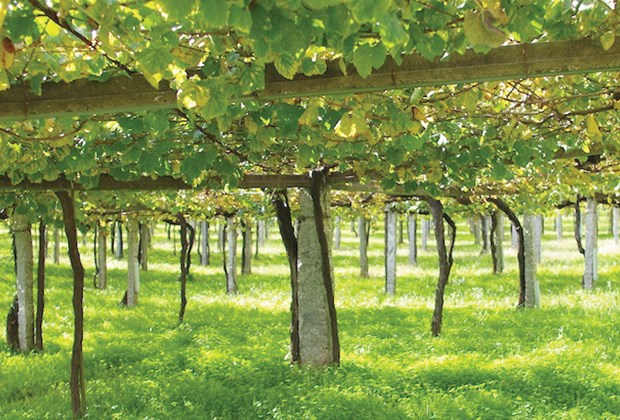The windswept northwest tip of Spain (immediately to the north of Portugal) is like no other wine region perhaps anywhere in the world.
Even in immensely diverse Spain, its culture offers a distinct contrast, being rooted in a Bronze Age tradition that dates back to pre-Roman times, and later, when the Celtic people settled much of northern Europe, from Scotland.
The local language, Gallego, is spoken by much of the population and, glancing at the written form, anyone familiar will see an obvious resemblance to Gaelic.
At Area Grande, a sunny restaurant overlooking the rugged, windswept, rocky coastline not that far south from notoriously stormy Cape Finisterre, you can find some of the best seafood anywhere, paired with wines from the region, known as Rias Baixas.
I discovered, yet once more, just how well Albarino (the region’s own variety) truly shines with local specialities, including brill, turbot, razor clams, swimming scallops, octopus and more, all stupendously fresh and simply prepared to honour the wealth of flavours.
One wine on the table that shone with just about every one of these dishes is Terras Gauda Abadia San Campio 2013. A workhorse of an Albarino, it yields refreshing, vibrant orchard fruits with well-balanced acidity and a crisp, clean finish.
Spain is far more widely known for its red wines and Cava than its white table wines. However, Albarino holds the white crown.
The variety, which makes up well over 90 per cent of Rias Baixas production, enjoys a range of styles that can incorporate tropical, floral and citrus notes. But, especially when grown close to the coast, it often shows a distinctive and intriguing streak of salinity and mineral undertones, which makes it more than a perfect match for fresh oceanic fare.
Rarely is wood used in the vineyard, as the weather and marine influences are just too damp.
“We have the happiest mildew in the world,” jokes Luisa Freire, a native of the region and winemaker at Santiago Ruiz. Her Santiago Ruiz 2013 (O Rosal) is a beautifully balanced, aromatic, citrus-and-mineral toned blend of Albarino (70 per cent), Loureiro, Caino white, Treixadura and Godello.
Although Freire’s vineyards employ a modern trellis system, just like you’d see in the Okanagan, most of Rias Baixas vines have traditionally been grown high off the ground in canopies known as pergolas, supported by massive, upright, granite concrete pillars.
While most Albarino is 100 per cent varietal, O Rosal region (in the south just across the Minho River from Portugal) is seeing limited plantings of several other varieties, offering winemakers the opportunity to produce more varied and often quite complex Albarino blends.
You won’t find a lot of Albarino on local shelves yet, although the number is growing.
Here’s a couple to hunt down:
Vionta Albarino 2013
Owned by Friexenet Group, here’s a very good example of the variety that’s widely available. Look for a slightly yeasty tone with melon and tropical notes, followed by a lively, fruit-driven palate with good acidity and a little zest in the finish (BCLS $26.99, 89 points).
Albarino de Fefinanes 2013
Distinctly mineral, with up-front stone fruits, floral notes and apple and pear hints. Very crisp and clean in the mouth with complex mineral notes through a lengthy but crisp and clean finish (91 points), Private Wine Stores, including Marquis Wines Cellars (2012), $31.90.
Much more to come on Albarino in coming weeks.
Tim Pawsey writes about wine for numerous publications and online as the Hired Belly at hiredbelly.com. Contact: [email protected].



